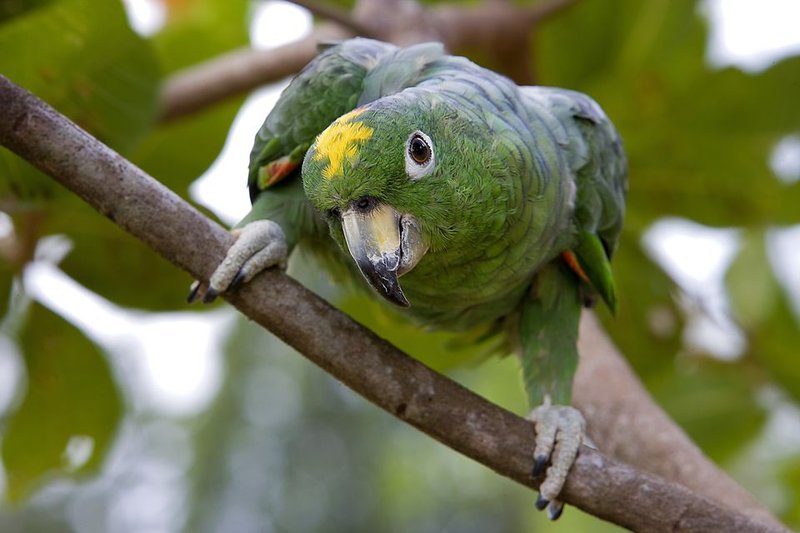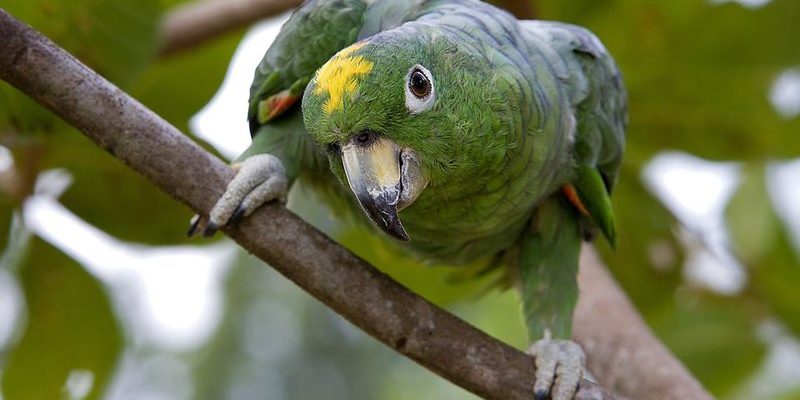
In this article, we’ll dive into the clever strategies these parrots use to survive and flourish. We’ll explore their behaviors, diet, social interactions, and more—all the things that make them fascinating residents of their lush habitat. Whether you’re an avid birdwatcher or just curious about nature’s wonders, you’ll find something interesting about how Amazon parrots have become the ultimate survivalists in their tropical home.
Understanding Amazon Parrots’ Habitat
Amazon parrots primarily call the lush rainforests of Central and South America home. Think of it as their cozy apartment filled with everything they need: food, nesting sites, and plenty of places to socialize. The dense foliage provides both shelter and safety, protecting them from predators while making it easy for them to find a meal.
These birds thrive in moist areas, where tall trees create a multi-layered environment. Each layer—from the forest floor to the canopy—offers different resources. The lower levels are rich with fruits, nuts, and seeds, while the higher branches host flowers and leaves that are just as tasty. By adapting to these varied layers, Amazon parrots can access a buffet of food sources throughout the year.
This adaptability plays a key role in their survival. If one food source becomes scarce, they can quickly switch to another. This flexibility is crucial, especially as environmental changes such as deforestation threaten their natural habitat.
Diet and Foraging Techniques
Amazon parrots are not picky eaters. They have an omnivorous diet, which means they’ll munch on everything from fruits and seeds to flowers and even small insects. They prefer to forage in the morning and late afternoon, using their strong beaks to crack open hard nuts or peel away tough skins.
When it comes to foraging, these parrots have some clever tricks up their sleeves. They often work in pairs or small groups, increasing their chances of spotting food. Imagine a group of friends at a buffet, each picking out different dishes. It’s the same concept! By collaborating, they can cover more ground and discover food sources faster.
Additionally, Amazon parrots are known for their impressive memory skills. They can remember where the best food sources are located, returning to the same spot day after day. This kind of learning is essential, especially when food becomes scarce during certain seasons.
Social Structure and Communication
One of the most captivating aspects of Amazon parrots is their social nature. They are highly intelligent and thrive in flocks, which can range from a small group to hundreds of birds. Being social isn’t just about company; it’s also about survival.
In their tight-knit communities, these parrots develop complex communication skills. They use a mix of loud calls, squawks, and even body language to convey messages. This chatter serves as a warning system for potential dangers, helping the flock stay safe. It’s like having a built-in security system that keeps them alert!
The social dynamics within the flock can also influence their breeding behaviors. The strongest pairs often lead the group and become the primary breeders. This ensures that the next generation is strong and well-equipped to face the challenges of their environment.
Breeding and Nesting Adaptations
When it comes time to breed, Amazon parrots employ some interesting strategies to ensure their young survive. They typically nest in tree cavities, which provide protection from predators and harsh weather. Finding the right spot is crucial, and they often compete for the best nesting sites.
Once they find a suitable location, the female lays a clutch of eggs and both parents participate in raising the chicks. They’ll take turns incubating the eggs and feeding the young, which helps build a resilient family unit. The more hands—or beaks—involved, the better the chances of survival for the little ones.
After hatching, the chicks spend their early days relying on their parents. As they grow, the young parrots learn essential skills by watching and mimicking their parents. This learned behavior is vital for their adaptation to the wild, as it enables them to understand what to eat and how to interact socially.
Physical Adaptations for Survival
With their vibrant plumage and strong bodies, Amazon parrots have physical adaptations that make them well-suited for their habitat. Their beaks are sturdy and curved, perfect for cracking seeds and nuts. This feature isn’t just for show; it’s functional, allowing them to access a variety of foods other birds might struggle with.
Their sharp talons help them navigate through trees, offering grip and stability as they climb and hop from branch to branch. Additionally, their excellent vision allows them to spot potential predators and food sources from a great distance. Think of them as nature’s little acrobats, agile and alert at all times.
Amazon parrots also have a unique feather structure that enables them to fly gracefully through the dense canopy. Their wings are designed for maneuverability, allowing them to dart around obstacles effortlessly. This capability can mean the difference between life and death when escaping predators or searching for food.
Challenges to Adaptation
While Amazon parrots are incredibly adaptable, they still face numerous challenges in their environment. Habitat destruction, primarily due to logging and agriculture, poses a significant threat to their survival. As their homes vanish, so do their resources, forcing them to compete for food and nesting sites.
Climate change is another concern. It alters weather patterns, affecting the availability of food and the health of their habitats. Droughts and heavy rains can disrupt their delicate ecosystem, making it harder for them to thrive.
Conservation efforts are crucial in helping these stunning birds adapt to ongoing changes. By protecting their natural habitats and raising awareness about their plight, we can help ensure that Amazon parrots continue to soar through the skies.
The Importance of Conservation Efforts
Conservation initiatives play a vital role in helping Amazon parrots adapt to their changing environments. Many organizations focus on protecting their habitats, reforestation, and raising public awareness about the importance of these birds.
By supporting conservation efforts, we can contribute to the preservation of their natural habitats and help mitigate the threats they face. This not only protects Amazon parrots but also the entire ecosystem they inhabit. After all, a healthy environment benefits all creatures, including us!
In addition to habitat protection, captive breeding programs also play a part in conservation. These programs aim to raise awareness and educate the public on the need for Amazon parrot preservation. By breeding these birds in controlled environments, we can ensure their survival and potentially reintroduce them into their natural habitats.
In conclusion, Amazon parrots are remarkable creatures that showcase the beauty and complexity of nature. Their ability to adapt to a variety of challenges—from their diet to social structure—demonstrates just how resilient they can be. By understanding these adaptations and supporting conservation efforts, we can help ensure that these vibrant birds continue to thrive in the wild for generations to come.

